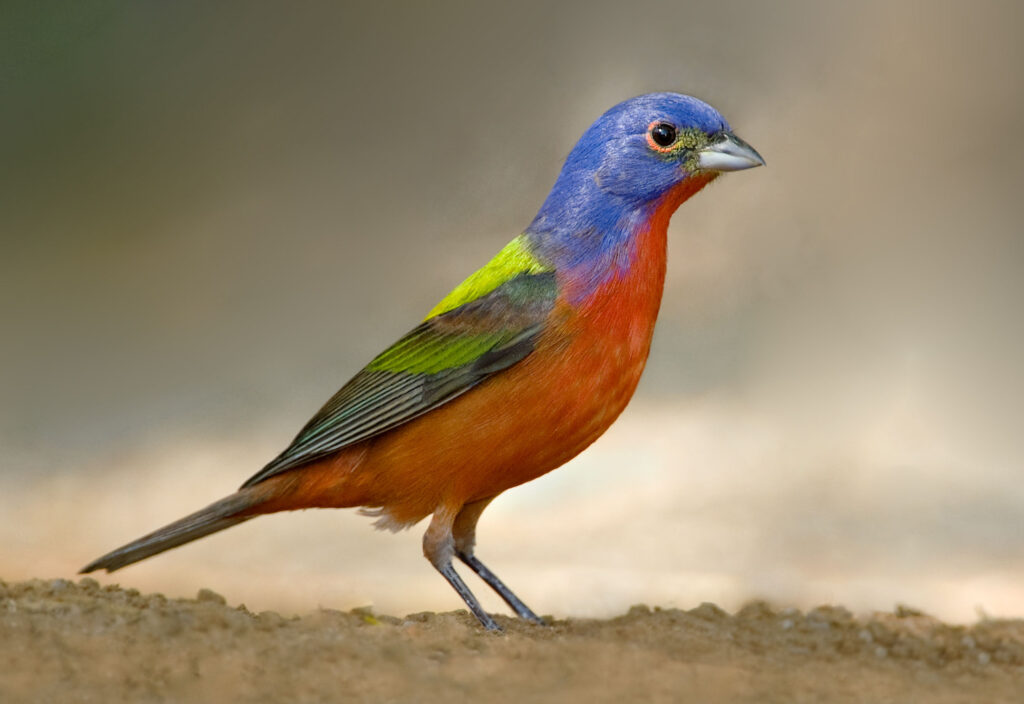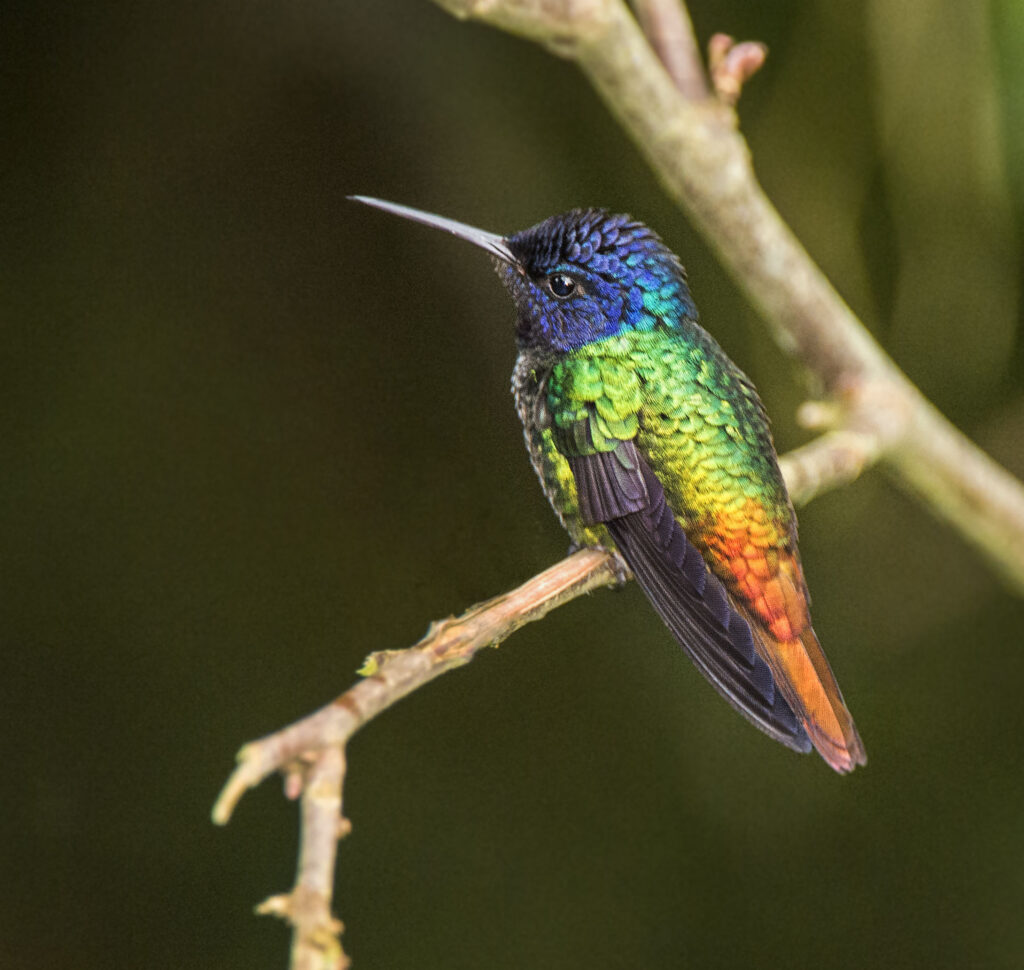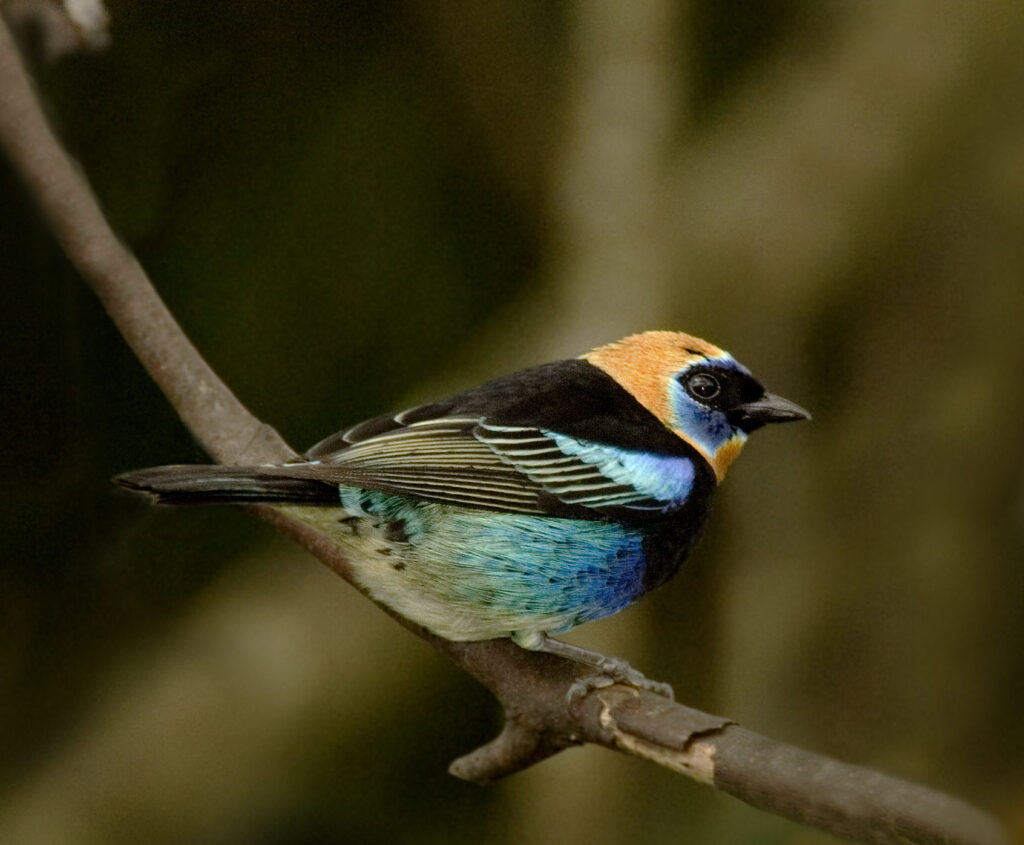
Birds are nature’s living canvases, adorned with an array of mesmerizing colors that captivate our senses. In today’s blog, we look at the fascinating world of multicolored plumage, focusing on three remarkable examples.
In previous blogs, we have looked at how and why feathers are the colors they are, using pigments absorbed from their food, or their very structure to bend light that shows our eyes a veritable dazzling palette. Feathers are the defining feature of birds, serving various essential functions such as flight, insulation, and courtship displays. However, the flamboyant plumage seen in certain species goes beyond mere functionality, transforming these birds into nature’s most exquisite works of art.
Painted Bunting

These small yet vibrant birds are native to North America. The male painted bunting is a visual marvel, displaying a kaleidoscope of colors across its plumage. Its head is a brilliant combination of royal blue and emerald-green, transitioning into a vibrant red on the breast and a sunny orangey-yellow on the belly and back. These vivid hues are created by a combination of pigments including carotenoids and melanins, and structural coloration of the feathers, where the feathers have tiny ridges and grooves that interfere with the light, causing it to be reflected in different ways, which we perceive as the distinctive iridescent blues and greens. The overall result is a stunning avian palette that appears hand-painted by a master artist.
Golden-tailed Sapphire

Down in the neotropics in Central and South America, this small hummingbird boasts enchanting plumage. Its name, whilst not inaccurate, doesn’t quite do the entire bird justice, as the male golden-tailed sapphire shimmers all over like a precious gem. He exhibits a metallic purple and blue crown, a vibrant dark blue throat and deep iridescent petrol-green back which finally gives way to the bronzes and golds of the eponymous tail feathers. Such radiant hues are achieved through a phenomenon called iridescence, where the feather’s structure scatters light, revealing a range of spectral colors depending on the angle of observation as sunlight dances across them, creating a mesmerizing display as the bird hovers in mid-air.
Golden-Hooded Tanager
Our exploration of multicolored plumage would be incomplete without mentioning this very attractive small tanager species found in the humid tropical lowland forests of Central America. Truly captivating, again, its name focuses on just one feature on this strikingly beautiful bird. The golden-yellow hood that adorns its head, offset by a bold black eye mask and cyan cheek spot beautifully contrasts with the cobalt blue feathers on its back and darker wings. The chest and underparts display a rich emerald green, completing a remarkable color scheme that is sure to leave any observer in awe. Like the painted bunting and the golden-tailed sapphire, the vibrant colors of the golden-hooded tanager are the result of intricate feather structures that manipulate light, creating an unforgettable visual spectacle.

The evolutionary purpose behind such extravagant plumage is often linked to courtship and mate selection. These multicolored feathers serve as signals, indicating the health, genetic quality, and overall fitness of the individual. In the avian world, it’s often the males that exhibit the most striking colors, as they compete to attract females with their dazzling displays. Through their remarkable feathers, these species have evolved into living masterpieces, and are just a few examples of the countless avian wonders that grace our planet.


